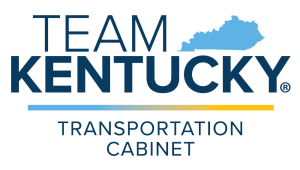FAQs
What was Bridging Kentucky?
Bridging Kentucky was a Kentucky Transportation Cabinet (KYTC) program that managed the rehabilitation and replacement of state, county and municipal bridges throughout the Commonwealth. The program – focused on improved safety and mobility – replaced 369 bridges by prioritizing needs and making plans for improvements.
How many bridges were in Kentucky and how many were in need of critical repairs?
Kentucky had more than 14,000 bridges. This program focused on restoring those bridges that were closed, posted with weight restrictions or rated in poor condition.
Were new bridges built to replace the ones in poor condition?
Not every aging structure in the program needed to be replaced. Many of the bridges were restored with structural improvements that added decades to their life.
Why were so many bridges broken?
Like many states, Kentucky struggled to keep up with needed maintenance and replacement of infrastructure due to limited revenues for transportation. Bridging Kentucky, along with KYTC’s Pavement Preservation Program, represented a renewed emphasis on prioritizing our limited dollars to maintain the Commonwealth’s current transportation system.
Did this fix the problem?
No. Bridging Kentucky addressed only Kentucky’s bridges with the most pressing needs. The program represented a portion of bridges in need of some level of repair.
How long will these bridges last?
Bridges that were rehabilitated through the program were designed to remain sound for decades to come. New bridges generally had a design life of 75 years.
How were the bridges prioritized?
KYTC worked with engineers to study the bridges in the program and quickly identify those that could be rehabilitated immediately and returned to full service. In tandem, the project team prioritized the bridge list so those projects identified in the highway plan with the greatest needs and impact could be fixed with the dollars the state had available.
How did KYTC decide which bridges would be part of the program?
In line with the state’s prioritization efforts, KYTC used a data-driven approach that focused primarily on:
- Improving safety
- Preserving existing infrastructure
- Spending tax dollars wisely (cost/benefit)
Who do I contact with a question about Bridging Kentucky?
To request more information about the program, use the form on our Contact Us page.
What was the Bridging Kentucky Program Team?
The Program Team was led by the Kentucky Transportation Cabinet and included a number of professional firms tasked with assisting KYTC to deliver the program.
The list of firms on the program team included:
Stantec Consulting Services
QK4
AECOM
Bancroft Relocation Services
JM Crawford
Strand Associates
Kristine Fallon & Associates
American Engineers Incorporated
Baumgarder & Associates PSC
Bluegrass Valuations Group
C2 Strategic Communications
Copperhead Environmental Consulting
Corn Island Archaeology
Cultural Resource Analysis
Eco-Tech Consultants
Embry Merritt Shaffar Womack PLLC
Fox, Wood, Wood & Estill
Integrated Engineering
Lee Engineering
Linebach Funkhouser
Redwing Ecological Services
